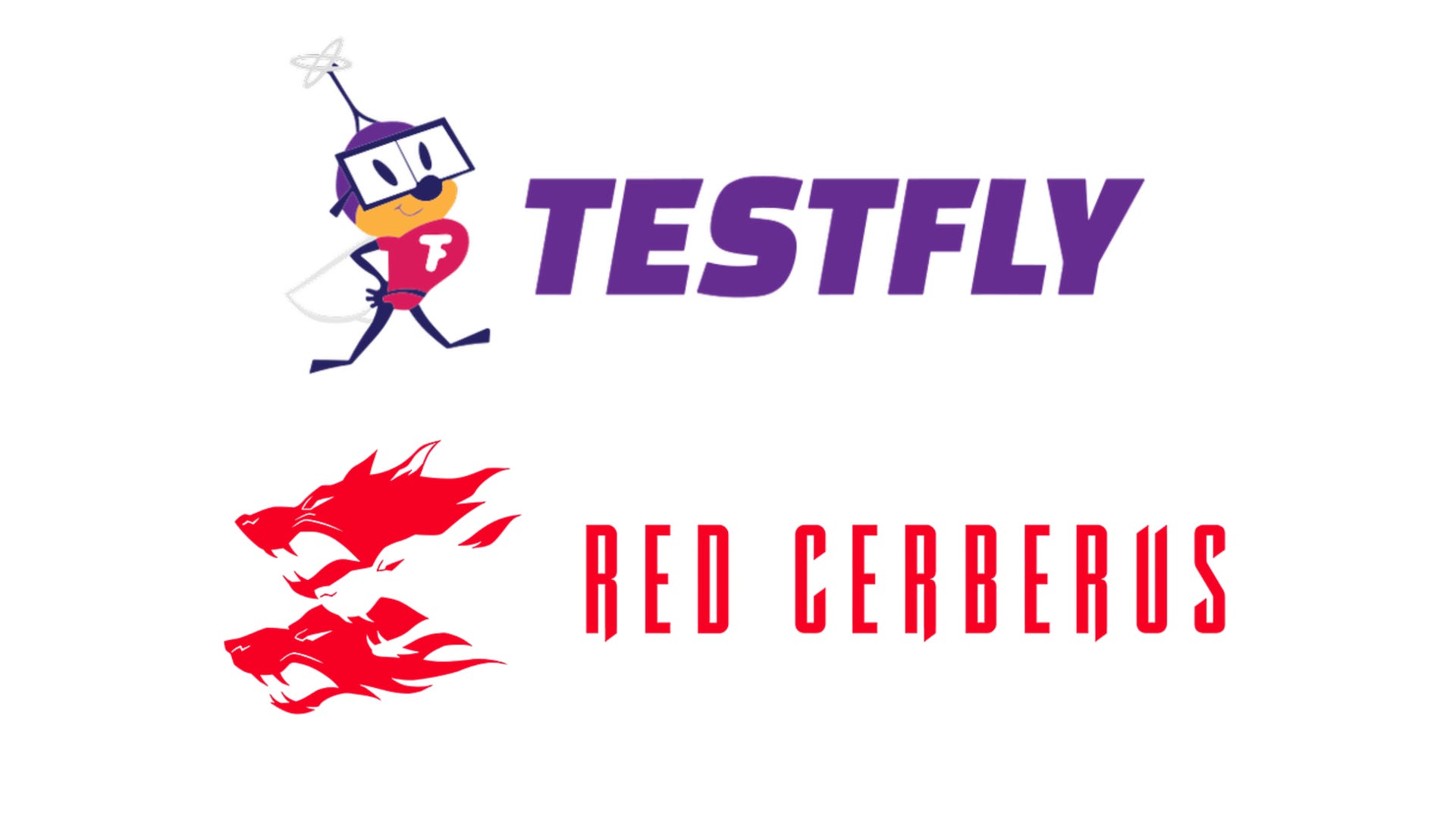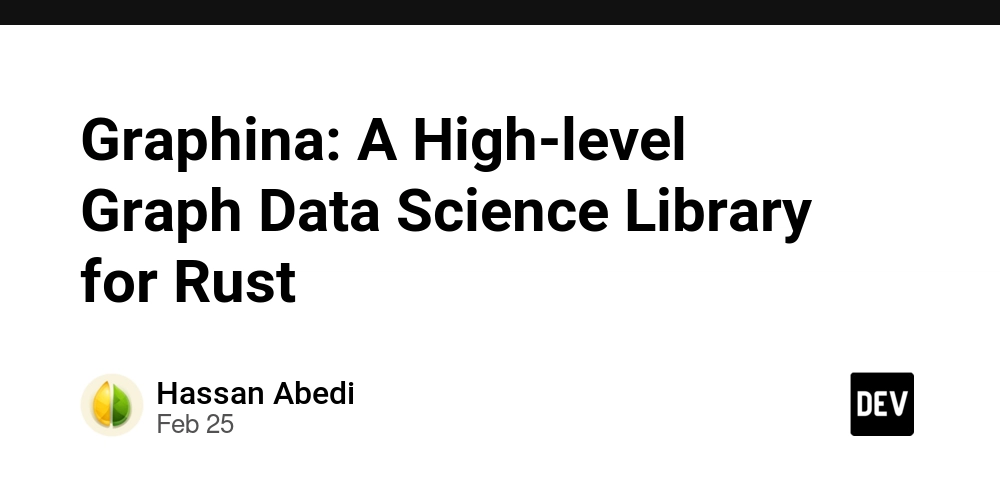Active MCP: Integrating Model Context Protocol with Rails
Introduction Since the beginning of 2025, Model Context Protocol (MCP) has been getting attention as an implementation method for LLM-based solutions. MCP is a protocol that standardizes the interface between AI models and applications, allowing LLMs to be provided with application features as tools. I think the methods for data exploration using LLMs will gradually transition from the standard vector database approach to MCP. On a personal note, I hadn't been following MCP much so I only recently started researching it. I tried implementing it with TypeScript SDK and mcp-rb, but I couldn't quite grasp the specifications, so I thought I'd create something from scratch and started writing a library. This time, I created a gem called "Active MCP" that allows Rails applications to easily generate MCP server schemas. https://github.com/moekiorg/active_mcp Overview of MCP For details, please refer to the official documentation, but as a refresher, when looking at MCP from client-side and server-side perspectives, it breaks down as follows: Client Side (e.g., Claude Desktop) Interprets natural language prompts from users and makes requests according to the MCP schema Server Side (various MCP servers) Performs operations or resource retrieval based on client requests and returns responses Also, the core of the MCP schema consists of Resources, Tools, and Prompts. Resources: Content like file contents or database information. Can be assigned URIs Tools: Define operations such as adding or deleting data Prompts: Define templates for prompt interactions that users can call like slash commands Features of Active MCP It consists of two main parts: ActiveMcp::Tool - Define MCP Tools within a Rails application ActiveMcp::Server - Launch an MCP server completely separate from the Rails application to communicate with the Rails app Since MCP-defined processes are mediated through HTTP, the MCP core handled by Active MCP currently includes only Tools, not Prompts and Resources. This approach may change in the future. When starting, ActiveMcp::Server fetches Tools defined by ActiveMcp::Tool from Rails and uses them to inform the client about available processes. When a request comes from an MCP client, it is processed within Rails via ActiveMcp::Server, and the response is returned to the MCP client. Installation Installing ActiveMCP is simple. First, add the following line to your Gemfile: gem 'active_mcp' Then, run the following command: $ bundle install Or you can install it directly: $ gem install active_mcp Basic Usage 1. Setting up Routes First, mount the Active MCP engine in your config/routes.rb: Rails.application.routes.draw do mount ActiveMcp::Engine, at: "/mcp" # Other route configurations end This makes /mcp the endpoint for executing processes defined in MCP. 2. Creating Tools Next, create tools that can be used with MCP. For example, you can define a tool to create notes as follows: class CreateNoteTool
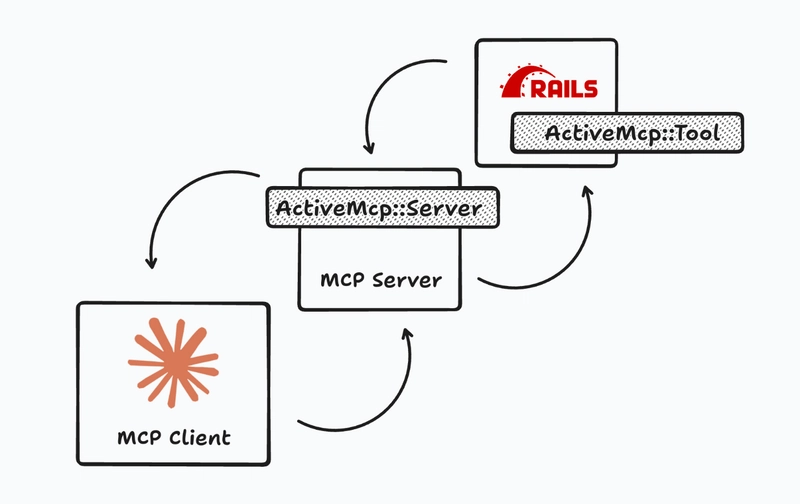
Introduction
Since the beginning of 2025, Model Context Protocol (MCP) has been getting attention as an implementation method for LLM-based solutions. MCP is a protocol that standardizes the interface between AI models and applications, allowing LLMs to be provided with application features as tools.
I think the methods for data exploration using LLMs will gradually transition from the standard vector database approach to MCP.
On a personal note, I hadn't been following MCP much so I only recently started researching it. I tried implementing it with TypeScript SDK and mcp-rb, but I couldn't quite grasp the specifications, so I thought I'd create something from scratch and started writing a library.
This time, I created a gem called "Active MCP" that allows Rails applications to easily generate MCP server schemas.
https://github.com/moekiorg/active_mcp
Overview of MCP
For details, please refer to the official documentation, but as a refresher, when looking at MCP from client-side and server-side perspectives, it breaks down as follows:
-
Client Side (e.g., Claude Desktop)
- Interprets natural language prompts from users and makes requests according to the MCP schema
-
Server Side (various MCP servers)
- Performs operations or resource retrieval based on client requests and returns responses
Also, the core of the MCP schema consists of Resources, Tools, and Prompts.
- Resources: Content like file contents or database information. Can be assigned URIs
- Tools: Define operations such as adding or deleting data
- Prompts: Define templates for prompt interactions that users can call like slash commands
Features of Active MCP
It consists of two main parts:
- ActiveMcp::Tool - Define MCP Tools within a Rails application
- ActiveMcp::Server - Launch an MCP server completely separate from the Rails application to communicate with the Rails app
Since MCP-defined processes are mediated through HTTP, the MCP core handled by Active MCP currently includes only Tools, not Prompts and Resources. This approach may change in the future.
When starting, ActiveMcp::Server fetches Tools defined by ActiveMcp::Tool from Rails and uses them to inform the client about available processes. When a request comes from an MCP client, it is processed within Rails via ActiveMcp::Server, and the response is returned to the MCP client.
Installation
Installing ActiveMCP is simple. First, add the following line to your Gemfile:
gem 'active_mcp'
Then, run the following command:
$ bundle install
Or you can install it directly:
$ gem install active_mcp
Basic Usage
1. Setting up Routes
First, mount the Active MCP engine in your config/routes.rb:
Rails.application.routes.draw do
mount ActiveMcp::Engine, at: "/mcp"
# Other route configurations
end
This makes /mcp the endpoint for executing processes defined in MCP.
2. Creating Tools
Next, create tools that can be used with MCP. For example, you can define a tool to create notes as follows:
class CreateNoteTool < ActiveMcp::Tool
description "Create a new note"
property :title, :string, required: true, description: 'Note title'
property :content, :string, required: true, description: 'Note content'
def call(title:, content:)
note = Note.create(
title: title,
content: content
)
if note.persisted?
"Note \"#{title}\" has been created. ID: #{note.id}"
else
"Failed to create note: #{note.errors.full_messages.join(', ')}"
end
end
end
In this example:
-
descriptiondefines the tool description -
propertydefines required parameters and their types - The
callmethod implements the actual process of the tool
The return value of the call method can be anything, but it will be sent directly to the MCP client and interpreted as text.
3. Starting the MCP Server
To start an MCP server locally during development, create a script like this:
# server.rb
require 'active_mcp'
server = ActiveMcp::Server.new(
name: "MyApp MCP Server",
uri: 'http://localhost:3000/mcp' # Remote servers work too, of course
)
server.start
4. Configuring the MCP Client
To connect a server to an MCP client, specify it in the client's configuration as follows:
{
"mcpServers": {
"my-rails-app": {
"command": "/path/to/ruby",
"args": ["/path/to/server.rb"]
}
}
}
Implementing Authentication
To implement authentication with MCP clients, specify a token in your server configuration:
server = ActiveMcp::Server.new(
name: "MyApp MCP Server",
uri: 'http://localhost:3000/mcp',
auth: {
type: :bearer,
token: ENV['MCP_ACCESS_TOKEN']
}
)
And to use authentication information within a tool:
def call(param1:, auth_info: nil)
# auth_info = { type: :bearer, token: 'xxx', header: 'Bearer xxx' }
unless auth_info.present?
return { type: "error", content: "Authentication required" }
end
# Verify authentication token and get user
token = auth_info[:token]
user = User.find_by_token(token)
unless user
return { type: "error", content: "Invalid token" }
end
# Process after successful authentication
# ...
end
Convenient Generators
ActiveMCP includes generators to help create tools:
# Generate a new MCP tool
$ rails generate active_mcp:tool search_users
This generates a basic tool template at app/tools/search_users_tool.rb.
Summary and Future Outlook
Through these implementations, I've finally been able to understand the concept of MCP to some extent. To retrieve or process information from an existing Rails application, you would normally need to set up external APIs and define MCP schemas that correspond to them, but Active MCP should make this process a bit easier.
Conclusion
I welcome your feedback and contributions.


































































![YouTube Announces New Creation Tools for Shorts [Video]](https://www.iclarified.com/images/news/96923/96923/96923-640.jpg)
![Apple Faces New Tariffs but Has Options to Soften the Blow [Kuo]](https://www.iclarified.com/images/news/96921/96921/96921-640.jpg)




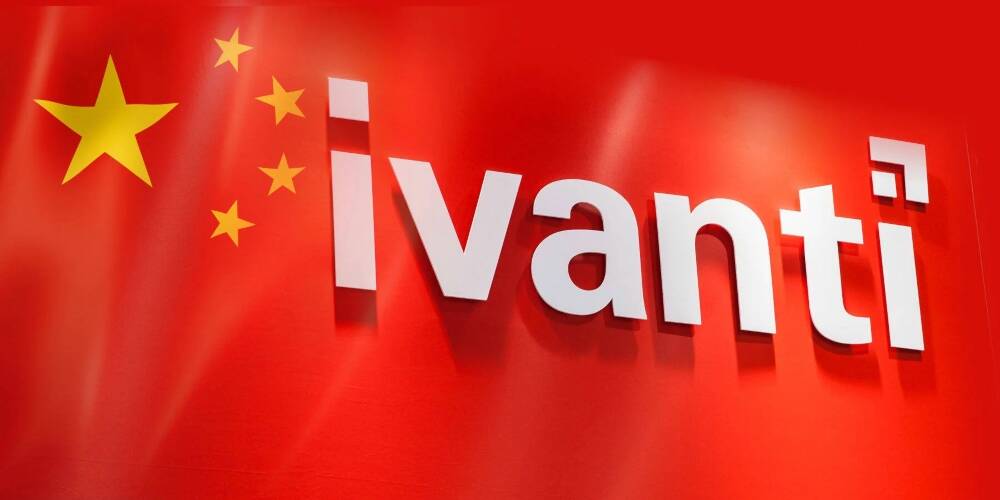













































































































































































![[The AI Show Episode 142]: ChatGPT’s New Image Generator, Studio Ghibli Craze and Backlash, Gemini 2.5, OpenAI Academy, 4o Updates, Vibe Marketing & xAI Acquires X](https://www.marketingaiinstitute.com/hubfs/ep%20142%20cover.png)



























































































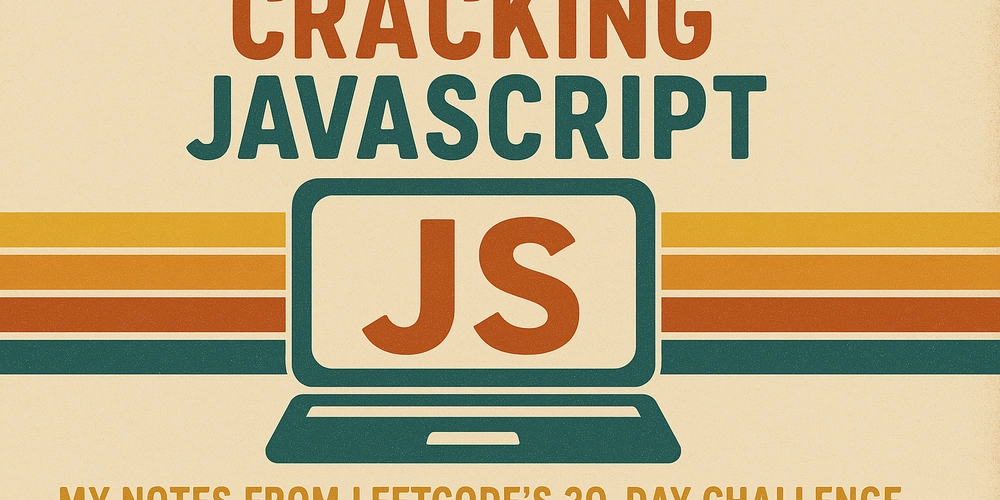
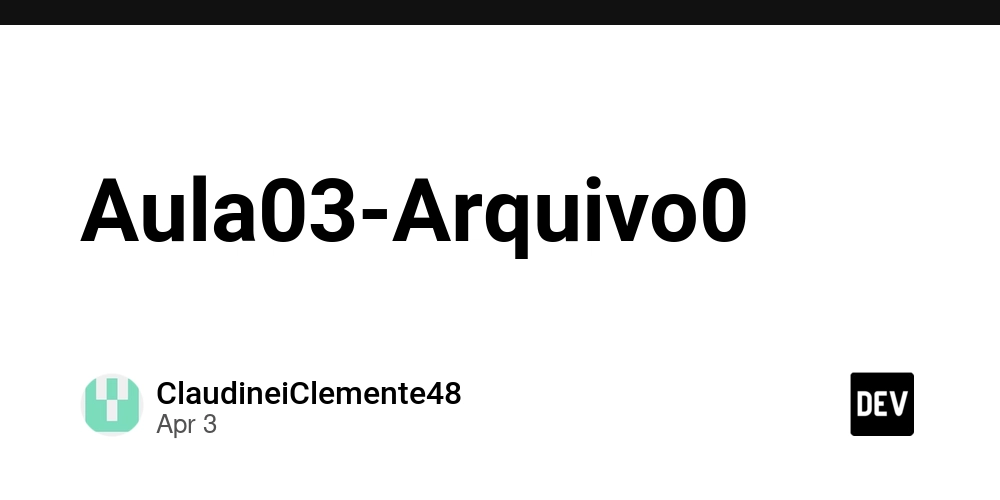
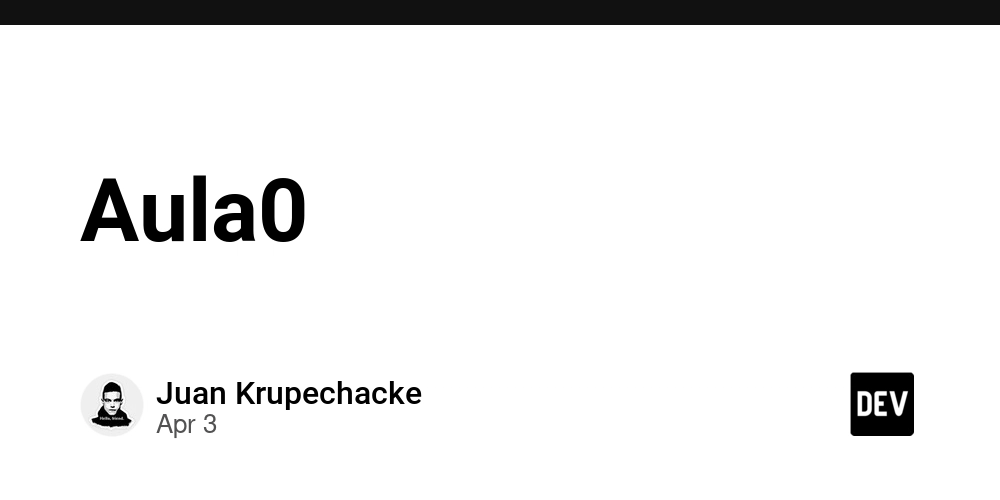




















![Is this a suitable approach to architect a flutter app? [closed]](https://i.sstatic.net/4hMHGb1L.png)






















![[DEALS] Microsoft Office Professional 2021 for Windows: Lifetime License (75% off) & Other Deals Up To 98% Off – Offers End Soon!](https://www.javacodegeeks.com/wp-content/uploads/2012/12/jcg-logo.jpg)

























